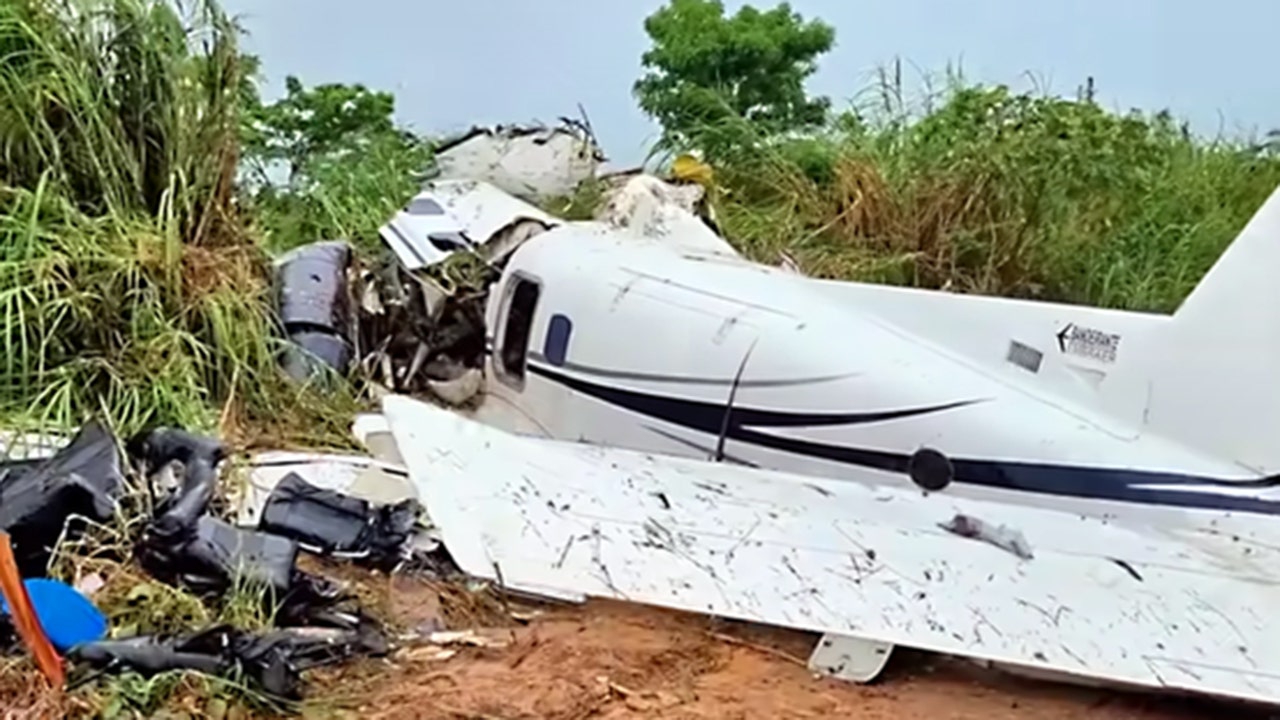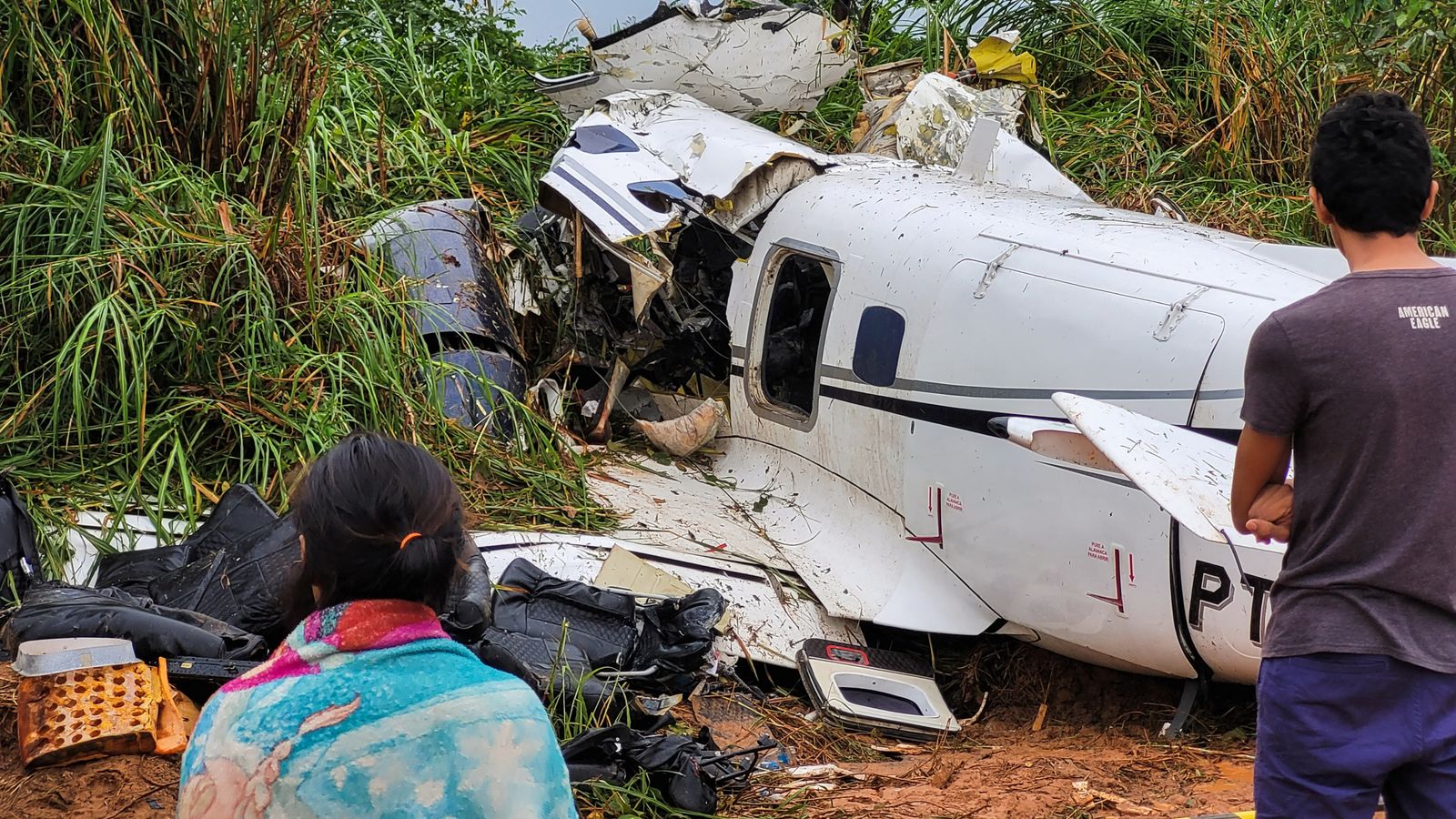Historical Overview of Brazilian Plane Crashes

Brazil, a country with vast geographical expanse and a burgeoning aviation industry, has unfortunately witnessed its share of tragic plane crashes throughout its history. These events have left an indelible mark on the nation, prompting investigations, reforms, and a continuous quest for enhanced aviation safety. This section delves into some of the most significant plane crashes in Brazil’s aviation history, exploring the contributing factors, the devastating impact, and the subsequent steps taken to improve safety regulations.
Most Significant Plane Crashes
These crashes, each with its unique circumstances, have shaped Brazil’s aviation safety landscape, highlighting the need for constant vigilance and continuous improvement.
- 1982 – Varig Flight 820 – This tragic incident involved a Boeing 737-200, which crashed near the city of Belém, claiming the lives of 137 people. The investigation revealed that the aircraft had experienced a loss of control due to a combination of pilot error and mechanical failure. This crash spurred a review of pilot training programs and aircraft maintenance protocols.
- 1989 – TAM Airlines Flight 402 – This crash, involving a Fokker F28 Fellowship, occurred during takeoff from Congonhas Airport in São Paulo. A total of 95 passengers and crew members perished in the accident. The investigation attributed the cause to a combination of pilot error, runway conditions, and inadequate braking systems. This incident led to the implementation of stricter safety measures at Congonhas Airport, including runway upgrades and enhanced safety protocols.
- 2006 – Gol Transportes Aéreos Flight 1907 – A Boeing 737-800 operated by Gol Transportes Aéreos collided mid-air with a Legacy 600 business jet over the Amazon rainforest. The Gol aircraft crashed, resulting in the deaths of all 154 passengers and crew members. The investigation revealed that the Legacy jet had been flying at an unauthorized altitude, contributing to the collision. This tragic event highlighted the need for stricter air traffic control regulations and improved communication protocols.
- 2007 – TAM Airlines Flight 3054 – A Boeing 737-800, operating as TAM Airlines Flight 3054, overran the runway at Congonhas Airport in São Paulo during a rainy day. The aircraft collided with a fuel truck, resulting in a fire and the deaths of 199 people. The investigation revealed that the aircraft’s braking system had malfunctioned due to the runway conditions and the pilot’s decision to abort the landing. This incident led to further improvements in runway safety measures, including the installation of new lighting systems and enhanced emergency response protocols.
Recurring Patterns in Causes of Crashes
A careful analysis of these and other plane crashes in Brazil reveals several recurring patterns in the causes, providing valuable insights into the challenges and priorities for improving aviation safety.
- Pilot Error: Pilot error has been a contributing factor in a significant number of plane crashes in Brazil. This includes factors such as poor decision-making, inadequate training, fatigue, and lack of situational awareness.
- Mechanical Failure: Mechanical failure, including engine problems, hydraulic system failures, and structural issues, has also been implicated in several crashes. This highlights the importance of rigorous aircraft maintenance and inspection protocols.
- Weather Conditions: Adverse weather conditions, such as thunderstorms, heavy rain, and strong winds, have contributed to a number of accidents. This emphasizes the need for robust weather forecasting systems and effective pilot training in managing challenging weather situations.
- Air Traffic Control: Issues related to air traffic control, including communication breakdowns, inadequate coordination, and airspace management challenges, have also played a role in some crashes. This underscores the need for continuous improvement in air traffic control systems and procedures.
Safety Measures and Regulations in Brazilian Aviation: Brazil Plane Crash Type

Brazil has a robust aviation safety framework that prioritizes passenger well-being and operational efficiency. This framework comprises regulations, oversight mechanisms, and industry best practices that aim to minimize risks and ensure a high level of safety in Brazilian airspace.
Regulatory Framework and Oversight
The National Civil Aviation Agency (ANAC) is the primary regulatory body for Brazilian aviation, responsible for establishing and enforcing safety standards. ANAC’s role encompasses a wide range of activities, including:
- Setting and enforcing safety regulations for aircraft operations, maintenance, and airworthiness.
- Licensing and certifying pilots, flight attendants, and other aviation personnel.
- Conducting audits and inspections of airlines and airports to ensure compliance with regulations.
- Investigating aviation accidents and incidents to identify causes and recommend preventative measures.
ANAC works closely with other government agencies, such as the National Institute of Meteorology (INMET), to ensure the safety of air traffic and weather-related risks.
Safety Measures and Procedures
Brazilian airlines implement a variety of safety measures and procedures to mitigate risks and ensure passenger safety. These include:
- Pilot training and qualification: Pilots undergo rigorous training and qualification programs to ensure they possess the necessary skills and knowledge to operate aircraft safely.
- Aircraft maintenance and inspections: Aircraft undergo regular maintenance and inspections to ensure they are airworthy and meet safety standards. This includes both scheduled maintenance and inspections triggered by specific events or incidents.
- Safety management systems (SMS): Airlines implement SMS to proactively identify and mitigate safety risks. This involves establishing a systematic approach to safety management, including risk assessments, hazard identification, and corrective actions.
- Operational procedures: Airlines have strict operational procedures in place to ensure safe flight operations, including procedures for takeoff, landing, and in-flight emergencies.
Effectiveness of Safety Measures, Brazil plane crash type
The effectiveness of safety measures in Brazilian aviation is evident in the significant reduction in accidents and fatalities over the years. This is attributed to the robust regulatory framework, stringent safety standards, and continuous efforts to improve safety practices.
- Data from the International Civil Aviation Organization (ICAO) indicates that Brazil has a relatively low accident rate compared to other countries, particularly in recent years.
- ANAC’s proactive approach to safety oversight, including conducting regular audits and investigations, has contributed to the improved safety record.
- The implementation of SMS by airlines has also played a significant role in promoting a safety culture and reducing risks.
Areas for Improvement
While Brazil has made significant strides in aviation safety, there are still areas where improvements can be made.
- Investment in infrastructure: Modernizing airports and air traffic control systems is crucial for enhancing safety and efficiency. This includes upgrading equipment, implementing new technologies, and ensuring sufficient capacity to handle growing air traffic.
- Strengthening safety culture: Fostering a strong safety culture within the aviation industry is essential for promoting proactive risk management and continuous improvement. This involves encouraging open communication, reporting of safety concerns, and a culture of learning from incidents and accidents.
- Data analysis and sharing: Improving data collection, analysis, and sharing of safety information can help identify trends, pinpoint areas of concern, and develop targeted interventions to address specific risks.
Brazil plane crash type – Brazil has seen its share of plane crashes, from the tragic loss of a small aircraft carrying a football team to the chilling disappearance of a commercial flight over the Amazon. The investigation into plane crash brazil today highlights the need for ongoing safety measures, especially as the country’s aviation industry continues to grow.
Understanding the different types of plane crashes in Brazil, from technical failures to human error, is crucial for preventing future tragedies.
The Brazilian plane crash type is a tragic reminder of the fragility of flight, a delicate dance between man and machine. These incidents often involve passenger planes , vessels carrying dreams and aspirations across the vast expanse of the sky.
Understanding the complexities of these crashes, from mechanical failures to human error, is crucial for preventing future tragedies and ensuring the safety of those who choose to soar above the clouds.
